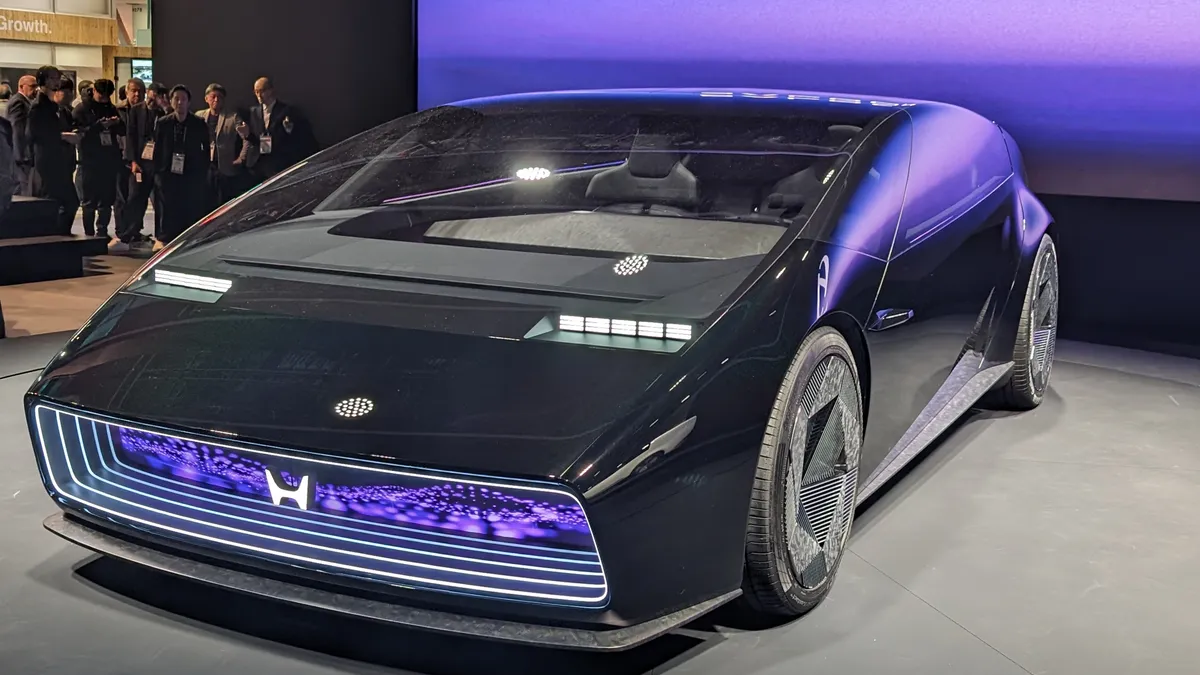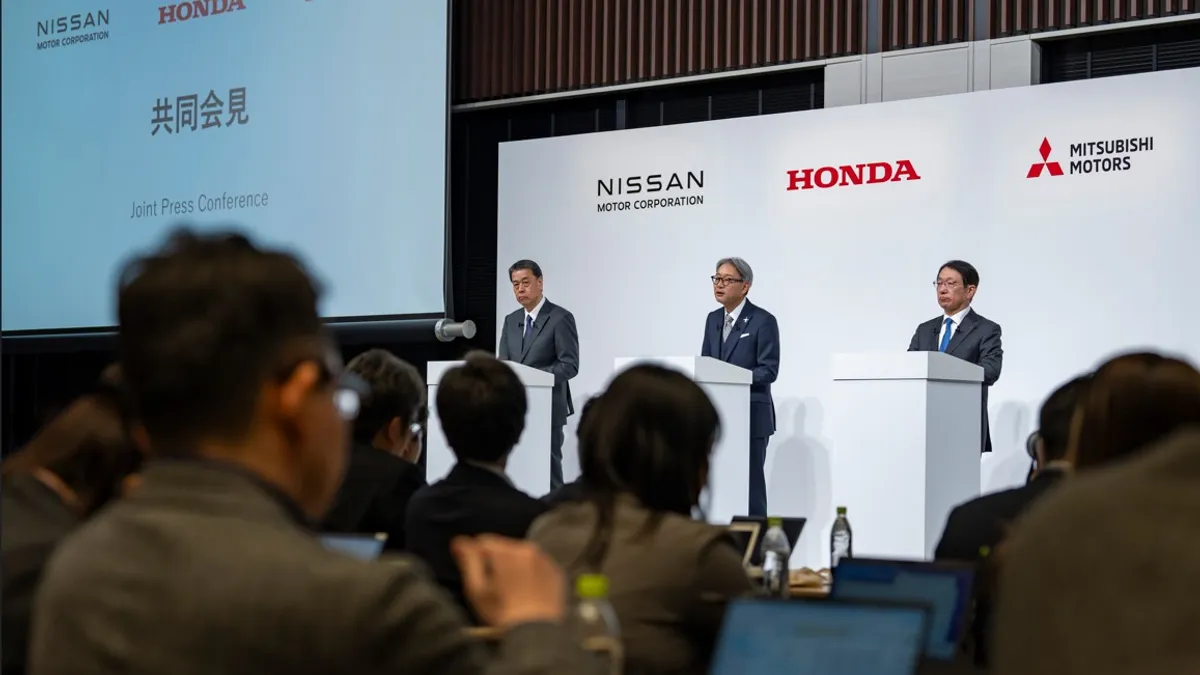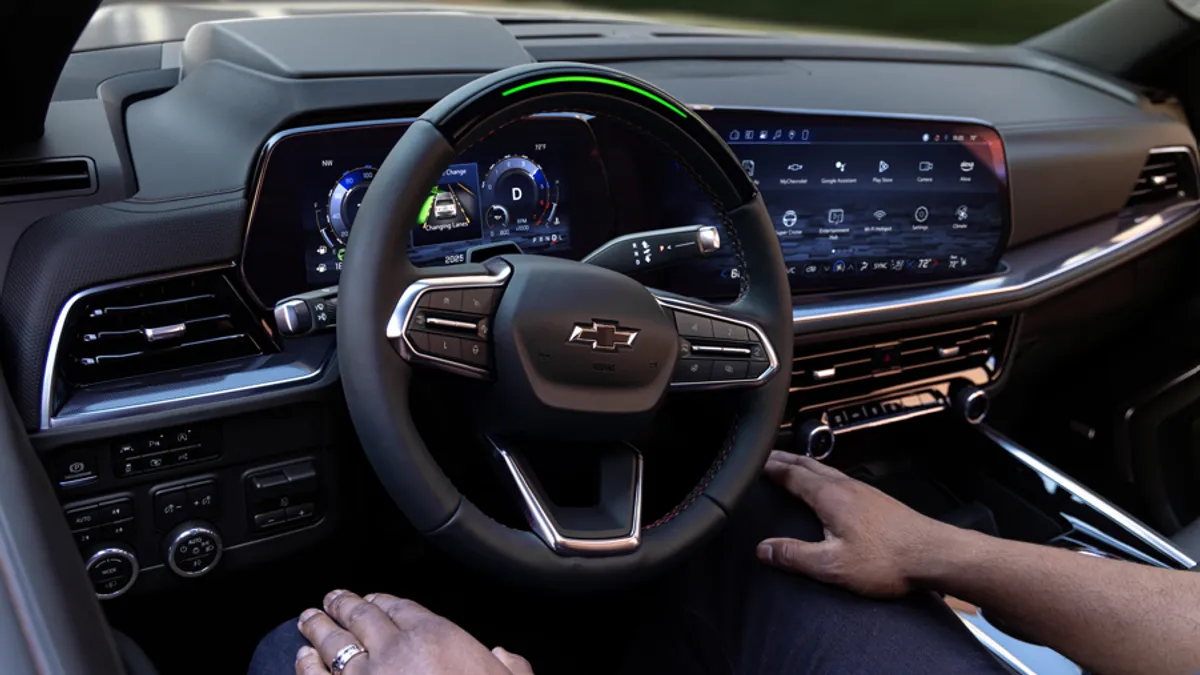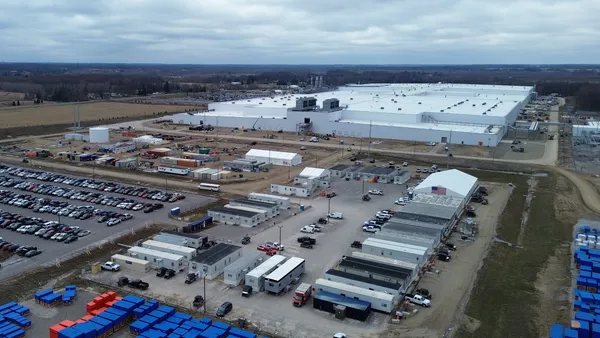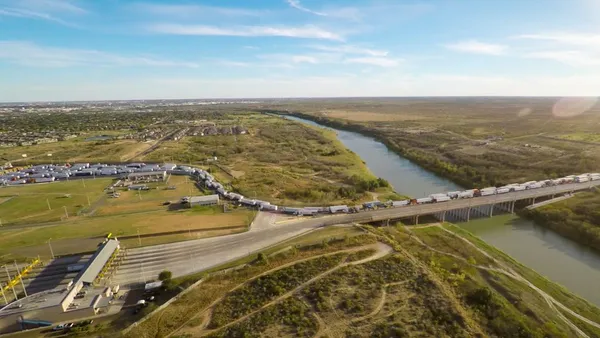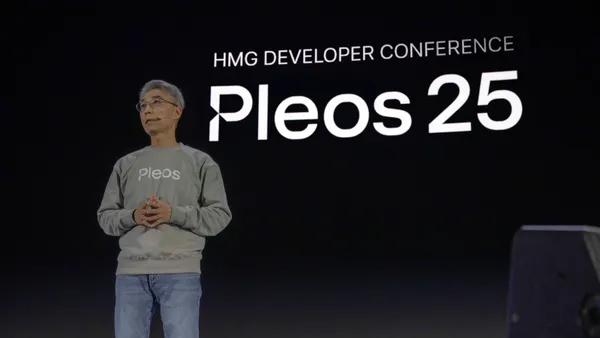Dive Brief:
- Honda Motor Corp’s global CEO Toshihiro Mibe shared the automaker’s updated electrification and investment strategy at a press briefing in Tokyo on Thursday.
- The plans include a massive investment of 10 trillion yen (about $64 billion), according to translated remarks by Mibe. The company will use the funds to develop an electric vehicle value chain with a focus on reducing the cost of batteries by 20% and overall vehicle production costs by 35% over the next decade.
- Honda also reiterated its plans for EVs and fuel cell vehicles to account for 40% of its global auto sales, and to produce more than 2 million of them by 2030. The automaker’s future “Honda 0 Series” vehicles will be positioned as its flagship electric models, and it plans to launch seven new EVs under the new sub-brand by 2030.
Dive Insight:
Although the auto industry’s transition to electrification has slowed considerably, Honda says that the electrification of cars and motorcycles is the most effective solution to reduce carbon emissions in the mobility industry, according to remarks by Mibe at the company’s briefing in Tokyo.
The investments and strategic initiatives undertaken by Honda now will help prepare the automaker for the auto industry’s larger shift toward electrification, which is expected to occur by the end of the decade. The automaker will use the investments to create an entire EV value chain. In addition, Honda aims to achieve a 5% return on sales for its EV business by 2030.
Honda says its goal of selling only EVs and FCEVs by 2040 remains unchanged.
In the interim, Honda will launch more hybrid-electric vehicles globally to meet growing demand for these more fuel efficient models. It’s a similar strategy other automakers are taking as EV demand wanes.
Honda plans to redesign its current hybrid vehicle powertrain, which uses a dual-motor, hybrid-electric system. The new version will be lighter and more efficient, according to Honda, and will be shared among more models. The automaker plans to invest the revenue generated from its internal combustion engine and hybrid vehicles sales to fund future EV development.
At the briefing, Honda’s CEO also shared some new information about its dedicated EV brand dubbed “0 Series.” Honda unveiled two concept 0 Series EVs earlier this year at the Consumer Electronics Show in Las Vegas, which included the futuristic “Space Hub” and “Saloon.” Honda says that the Saloon will be the flagship model of the new 0 Series family of EVs, with a production version of the concept model due to launch in 2026.
The Honda 0 Series EVs will be built on a new dedicated platform for mid- to large-size battery-powered vehicles. The platform will feature a compact e-Axle and ultra-thin battery pack, allowing the automaker to further expand passenger space. By reducing the size of core EV components, Honda aims to achieve a weight reduction of approximately 100 kilograms (220 pounds) compared to its initial EVs.
Other design elements for 0 Series EVs include an optimized component layout with fewer parts along with body frames that combine superior design and performance, according to the press release. Honda also says its future EVs will offer an intuitive user interface and improved visibility.
Honda’s 0 Series vehicle functions will be software-based and receive continuous over-the-air updates. The EVs will be built using centralized electrical/electronic architecture, which will consolidate multiple electronic control units into a single core processor that will serve as the “brain” of the entire vehicle.
In 2025, Honda will begin battery production in North America with its joint venture partner LG Energy Solution. The batteries will be produced at a JV battery plant with an initial capacity of 40 gigawatt hours per year. Honda will also invest in battery recycling initiatives in North America over the next decade.
In Canada — where Honda recently announced an $11 billion investment to build an EV value chain — the automaker will begin in-house production of batteries co-developed with Japan-based battery manufacturer GS Yuasa. Honda will also produce battery cathode materials with POSCO Future M, which is also General Motors’ joint venture partner, as well as battery separators with Asahi Kasei at new joint venture facilities that will be built in the future.
However, before Honda’s more advanced EVs are launched, Honda says it will procure only the necessary volume of batteries it needs to meet demand. Honda will strengthen its supply partnerships for lithium-ion batteries in each respective region as needed.
Honda believes it will have enough battery supply to build 2 million EVs by 2030.
Last month, Honda also shared updates on its planned EV hub in Ohio that will support its future electrification strategy. The projects in Ohio include assembly line upgrades and the installation of high-pressure die cast machinery.
The automaker says that each of its North America production facilities will have a “critical role” in its electrified future, with the various projects part of a minimum investment of $700 million to establish EV production in North America.
Honda will also launch new EVs in China as part of its updated electrification strategy. The company plans to launch 10 EV models in the China market by 2027 and eventually have EVs account for 100% of its sales in the country by 2035.



